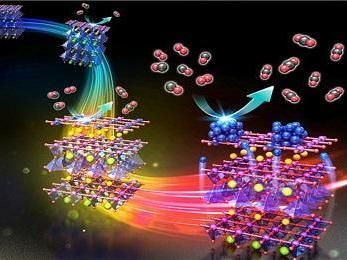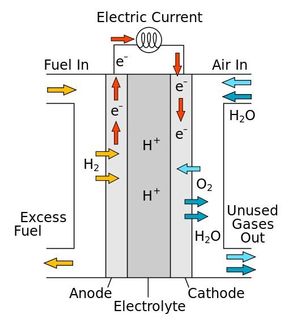Unique catalysts for hydrogen fuel cells synthesized in ordinary kitchen microwave oven
Swedish and Chinese researchers show how a unique nano-alloy composed of palladium nano-islands embedded in tungsten nanoparticles creates a new type of catalysts for highly efficient oxygen reduction, the most important reaction in hydrogen fuel cells. Their results are published in the scientific journal Nature Communications.
The world's rapidly growing demand for energy and the requirement of sustainable energy production calls for an urgent change in today's fossil fuel based energy system. Research groups worldwide work intensively to develop novel advanced energy conversion and storage systems with high efficiency, low cost and environmental compatibility.
Fuel cell systems represent a promising alternative for low carbon emission energy production. Traditional fuel cells are however limited by the need of efficient catalysts to drive the chemical reactions involved in the fuel cell. Historically, platinum and its alloys have frequently been used as anodic and cathodic catalysts in fuel cells, but the high cost of platinum, due to its low abundance, motivates researchers to find efficient catalysts based on earth-abundant elements.
"In our study we report a unique novel alloy with a palladium (Pd) and tungsten (W) ratio of only one to eight, which still has similar efficiency as a pure platinum catalyst. Considering the cost, it would be 40 times lower", says Thomas Wågberg, Senior lecturer at Department of Physics, Umeå University.
The explanation for the very high efficiency is the unique morphology of the alloy. It is neither a homogeneous alloy, nor a fully segregated two-phase system, but rather something in between.
By advanced experimental and theoretical investigations, the researchers show that the alloy is composed of metallic Pd-islands embedded in the Pd-W alloy. The size of the islands are about one nanometer in diameter and are composed of 10-20 atoms that are segregated to the surface. The unique environment around the Pd-islands give rise to special effects that all together turn the islands into highly efficient catalytic hot-spots for oxygen reduction.
To stabilize the nanoparticles in practical applications, they are anchored on ordered mesoporous carbon. The anchoring keep the nanoparticles stable over long time by hindering them from fusing together in the fuel cell tests.
"The unique formation of the material is based on a synthesis method, which can be performed in an ordinary kitchen micro-wave oven purchased at the local supermarket. If we were not using argon as protective inert gas, it would be fully possible to synthesize this advanced catalyst in my own kitchen! ", says Thomas Wågberg.
Wågberg and his fellow researchers have recently received funding from the Kempe Foundation to buy a more advanced micro-wave oven, and therefore they will be able to run more advanced experiments to fine tune some of the catalyst properties.
Original publication
Other news from the department science
These products might interest you

NANOPHOX CS by Sympatec
Particle size analysis in the nano range: Analyzing high concentrations with ease
Reliable results without time-consuming sample preparation

Eclipse by Wyatt Technology
FFF-MALS system for separation and characterization of macromolecules and nanoparticles
The latest and most innovative FFF system designed for highest usability, robustness and data quality

DynaPro Plate Reader III by Wyatt Technology
Screening of biopharmaceuticals and proteins with high-throughput dynamic light scattering (DLS)
Efficiently characterize your sample quality and stability from lead discovery to quality control

Get the chemical industry in your inbox
By submitting this form you agree that LUMITOS AG will send you the newsletter(s) selected above by email. Your data will not be passed on to third parties. Your data will be stored and processed in accordance with our data protection regulations. LUMITOS may contact you by email for the purpose of advertising or market and opinion surveys. You can revoke your consent at any time without giving reasons to LUMITOS AG, Ernst-Augustin-Str. 2, 12489 Berlin, Germany or by e-mail at revoke@lumitos.com with effect for the future. In addition, each email contains a link to unsubscribe from the corresponding newsletter.




























































